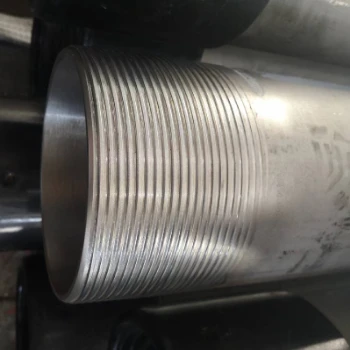- Afrikaans
- Albanian
- Amharic
- Arabic
- Armenian
- Azerbaijani
- Basque
- Belarusian
- Bengali
- Bosnian
- Bulgarian
- Catalan
- Cebuano
- Corsican
- Croatian
- Czech
- Danish
- Dutch
- English
- Esperanto
- Estonian
- Finnish
- French
- Frisian
- Galician
- Georgian
- German
- Greek
- Gujarati
- Haitian Creole
- hausa
- hawaiian
- Hebrew
- Hindi
- Miao
- Hungarian
- Icelandic
- igbo
- Indonesian
- irish
- Italian
- Japanese
- Javanese
- Kannada
- kazakh
- Khmer
- Rwandese
- Korean
- Kurdish
- Kyrgyz
- Lao
- Latin
- Latvian
- Lithuanian
- Luxembourgish
- Macedonian
- Malgashi
- Malay
- Malayalam
- Maltese
- Maori
- Marathi
- Mongolian
- Myanmar
- Nepali
- Norwegian
- Norwegian
- Occitan
- Pashto
- Persian
- Polish
- Portuguese
- Punjabi
- Romanian
- Russian
- Samoan
- Scottish Gaelic
- Serbian
- Sesotho
- Shona
- Sindhi
- Sinhala
- Slovak
- Slovenian
- Somali
- Spanish
- Sundanese
- Swahili
- Swedish
- Tagalog
- Tajik
- Tamil
- Tatar
- Telugu
- Thai
- Turkish
- Turkmen
- Ukrainian
- Urdu
- Uighur
- Uzbek
- Vietnamese
- Welsh
- Bantu
- Yiddish
- Yoruba
- Zulu
casing pup joint
Understanding Casing Pup Joints A Critical Component in Oil and Gas Operations
In the oil and gas industry, effective management of well integrity and production efficiency is paramount. One important component that plays a key role in this domain is the casing pup joint. Understanding its purpose, design, and application is essential for professionals involved in well construction and maintenance.
What is a Casing Pup Joint?
A casing pup joint is a short piece of pipe that is used to connect sections of casing in a well
. It is typically a few feet long and can vary in diameter, depending on the specific requirements of the well. The primary function of a pup joint is to adjust the length of the casing string to fit the exact depth of the well, ensuring a secure and tight assembly.Casing serves as a crucial barrier between the wellbore and the surrounding formations, preventing the migration of fluids and protecting the well from external pressures. As such, the pup joint is integral to maintaining the structural integrity of the well, especially in diverse geological conditions.
Design and Specifications
Casing pup joints are designed to endure high pressures and are subjected to various stresses during drilling and production activities. They are commonly manufactured from carbon steel, with specific grades that ensure optimal strength and durability. The joints are available in several sizes, with diameters ranging from 2 7/8 inches to 20 inches, accommodating various downhole conditions.
casing pup joint

The threading on the ends of a pup joint is critical for ensuring a tight connection with other casing components. Common types of threads used include API (American Petroleum Institute) threads and proprietary threading systems designed for specific applications. The choice of thread type affects the pup joint's ability to handle tensile loads, making it essential for engineers to select the appropriate specifications for their operations.
Applications in Oil and Gas Operations
Casing pup joints are commonly used in several scenarios within oil and gas operations. One of the most prominent uses is during the completion of a well, where they facilitate adjustments to taper or offset the casing string. This flexibility is crucial when dealing with irregular boreholes or when specific drilling techniques require precise adjustments.
Additionally, pup joints are used when transitioning between different casing sizes, allowing for smooth operation and continuity in the casing string. They also play a role in repairs, as they can be utilized to replace damaged sections of casing without the need for extensive modifications.
Another vital application lies in the enhancement of drilling performance. Pup joints can help in alleviating stress concentration points within the casing, potentially reducing the risk of failure during operation. Their strategic placement can mitigate risks associated with shifting geological formations and varying pressure conditions.
Conclusion
Casing pup joints may seem like simple components in the grand scheme of oil and gas operations, but their importance cannot be underestimated. They ensure the integrity and safety of wells while allowing flexibility in design and functionality. As the industry continues to evolve, the role of pup joints will remain critical in designing effective and safe drilling programs. Understanding their characteristics and applications will enable engineers and field operators to enhance well performance and longevity, ultimately contributing to the success of oil and gas endeavors worldwide.
-
Well Casing Extension Couplings – Applications and InstallationNewsJun.06,2025
-
Types of Crossover Subs in Drilling & CompletionNewsJun.06,2025
-
Key Features of High-Quality Tubing Pup JointsNewsJun.06,2025
-
Installation and Maintenance Tips for Steel Couplings for PipeNewsJun.06,2025
-
How to Select the Right Pup Joint for Oil & Gas OperationsNewsJun.06,2025
-
Applications of Stainless Steel Pipe CouplingsNewsJun.06,2025







